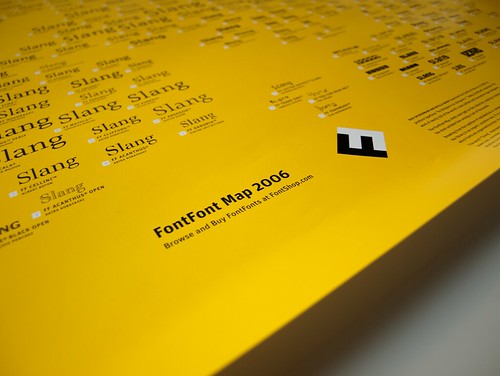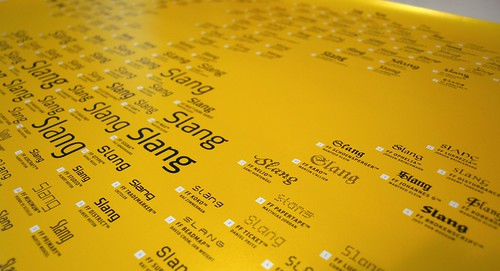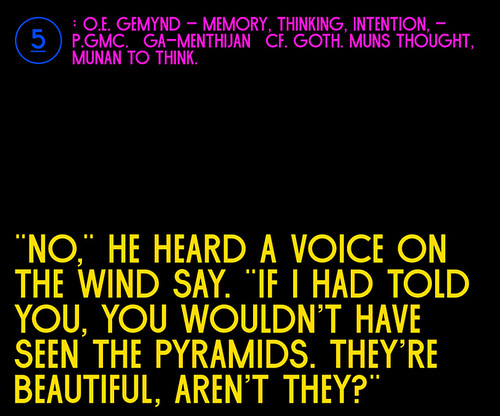FF Pitu Showing
Image by FontFont
Pitu started off in 2002 as a set of swashy capitals accompanied by lowercase that sits somewhere between a Didone italic and a Copperplate script. Its most characteristic features are probably the pronounced stroke modulation and blade-shaped sharp stroke endings, which are slightly softened by generous calligraphic loops with “foxtail” terminals. While keeping a slanted angle of the face, Łukasz Dziedzic expanded the initial face into a three-weight family, changed the proportions of the lowercase, reworked the swash capitals and added a complete set of “simple” Didone capitals and small caps.
See the entire FF Pitu specimen here.
FontFont Wall Map 2006
Image by Stewf
Great work from Jared Benson and Zara Evens.
Erik Spiekermann and Neville Brody launched the FontFont library in 1990 to produce typefaces “by designers for designers.” Today, FontFonts represent the work of nearly 150 of the world's most skilled and innovative type designers.
The FontFont Wall Map sheds new light on the collection, making it easier to find the most suitable face among a cast of thousands.
Breaking from the tradition of alphabetical or categorical order, the poster presents the library in an organic, intuitive way. It is a cloud map of typographic forms in which fonts are organized by their visual relationship.
The word "Slang" represents the main components of the latin alphabet — uppercase, lowercase, ascender, descender, rounds, and straights. The size of each font sample is relative to the family size. A count of styles and weights is shown in the box next to the font name.
FontFont Wall Map 2006
Image by Stewf
Great work from Jared Benson and Zara Evens.
Erik Spiekermann and Neville Brody launched the FontFont library in 1990 to produce typefaces “by designers for designers.” Today, FontFonts represent the work of nearly 150 of the world's most skilled and innovative type designers.
The FontFont Wall Map sheds new light on the collection, making it easier to find the most suitable face among a cast of thousands.
Breaking from the tradition of alphabetical or categorical order, the poster presents the library in an organic, intuitive way. It is a cloud map of typographic forms in which fonts are organized by their visual relationship.
The word "Slang" represents the main components of the latin alphabet — uppercase, lowercase, ascender, descender, rounds, and straights. The size of each font sample is relative to the family size. A count of styles and weights is shown in the box next to the font name.
FontFont Wall Map 2006
Image by Stewf
Great work from Jared Benson and Zara Evens.
Erik Spiekermann and Neville Brody launched the FontFont library in 1990 to produce typefaces “by designers for designers.” Today, FontFonts represent the work of nearly 150 of the world's most skilled and innovative type designers.
The FontFont Wall Map sheds new light on the collection, making it easier to find the most suitable face among a cast of thousands.
Breaking from the tradition of alphabetical or categorical order, the poster presents the library in an organic, intuitive way. It is a cloud map of typographic forms in which fonts are organized by their visual relationship.
The word "Slang" represents the main components of the latin alphabet — uppercase, lowercase, ascender, descender, rounds, and straights. The size of each font sample is relative to the family size. A count of styles and weights is shown in the box next to the font name.
Munan Typeface
Image by Anton Pearson
Typeface designed as part of Senior course work at MCAD. More here: antonpearson.com/Munan-Typeface
No comments:
Post a Comment